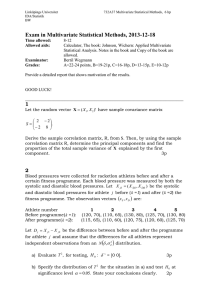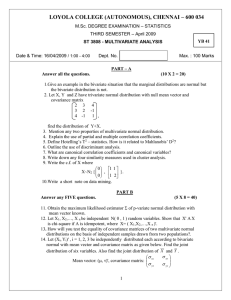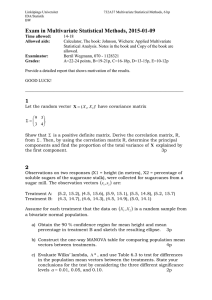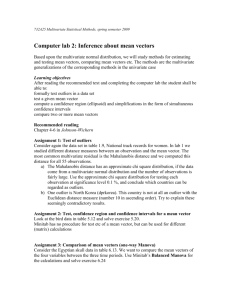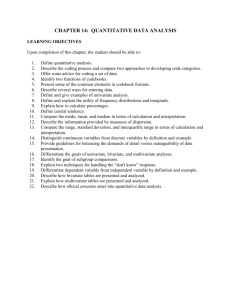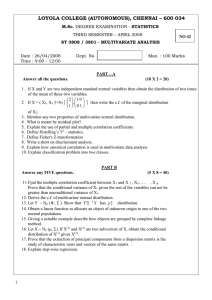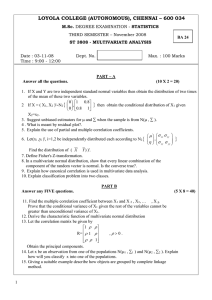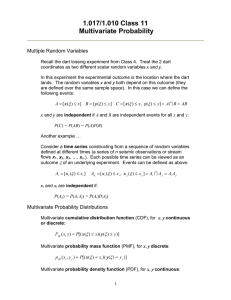Exam in Multivariate Statistical Methods, 2012-03-16
advertisement
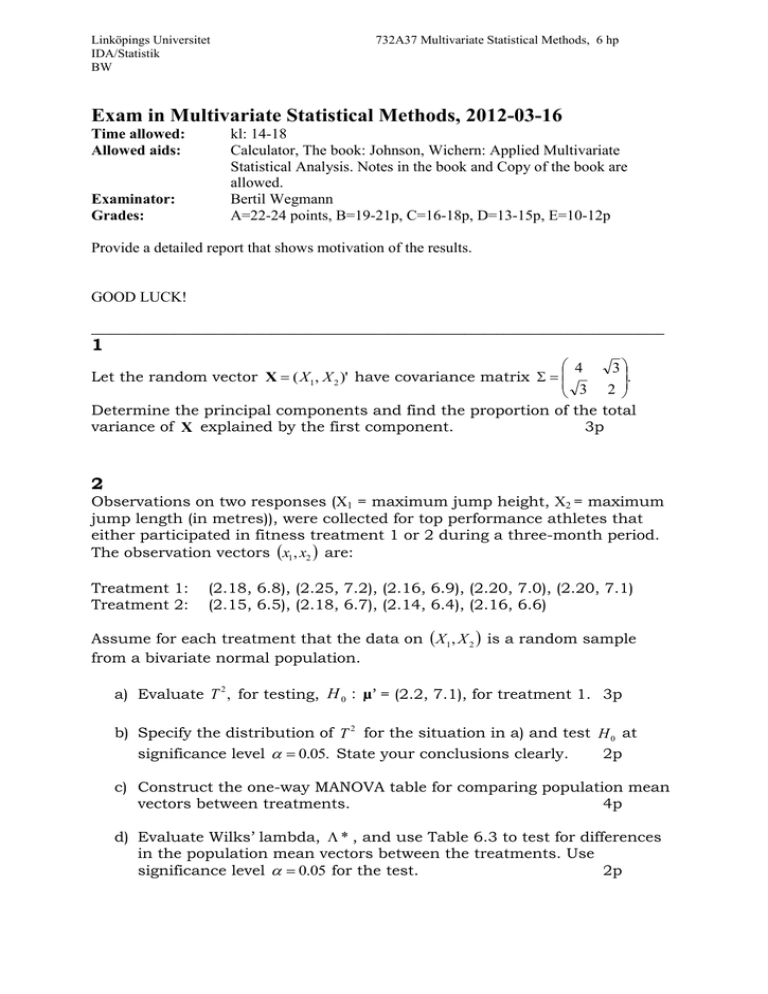
Linköpings Universitet IDA/Statistik BW 732A37 Multivariate Statistical Methods, 6 hp Exam in Multivariate Statistical Methods, 2012-03-16 Time allowed: Allowed aids: Examinator: Grades: kl: 14-18 Calculator, The book: Johnson, Wichern: Applied Multivariate Statistical Analysis. Notes in the book and Copy of the book are allowed. Bertil Wegmann A=22-24 points, B=19-21p, C=16-18p, D=13-15p, E=10-12p Provide a detailed report that shows motivation of the results. GOOD LUCK! _________________________________________________________________________________________ 1 4 3 . Let the random vector X ( X1, X 2 )' have covariance matrix 3 2 Determine the principal components and find the proportion of the total variance of X explained by the first component. 3p 2 Observations on two responses (X1 = maximum jump height, X2 = maximum jump length (in metres)), were collected for top performance athletes that either participated in fitness treatment 1 or 2 during a three-month period. The observation vectors x1 , x2 are: Treatment 1: Treatment 2: (2.18, 6.8), (2.25, 7.2), (2.16, 6.9), (2.20, 7.0), (2.20, 7.1) (2.15, 6.5), (2.18, 6.7), (2.14, 6.4), (2.16, 6.6) Assume for each treatment that the data on X1, X 2 is a random sample from a bivariate normal population. a) Evaluate T 2 , for testing, H 0 : µ’ = (2.2, 7.1), for treatment 1. 3p b) Specify the distribution of T 2 for the situation in a) and test H 0 at significance level 0.05. State your conclusions clearly. 2p c) Construct the one-way MANOVA table for comparing population mean vectors between treatments. 4p d) Evaluate Wilks’ lambda, * , and use Table 6.3 to test for differences in the population mean vectors between the treatments. Use significance level 0.05 for the test. 2p 3 Let X be distributed as where and ( ) a) Are X 2 , X 3 and X 1 independent? Explain. 1p b) Are X 2 and 3 X1 X 2 2 X 3 independent? Explain. 1p c) Find the distribution of 3 X1 X 2 2 X 3 . 2p 4 Consider a bivariate normal distribution with 1 1, 2 4,11 2, 22 5, and 12 2 / 5. Determine the constant-density contour that contains 95 % of the probability. Hence, specify the midpoint and the axes of the constant-density ellipse. You do not need to sketch the resulting ellipse. 3p 5 Let the random vector X ( X1(1) , X 2(1) X1( 2) , X 2( 2) )' have covariance matrix ( ) Verify that the first pair of canonical variates are U1 X 2(1) , V1 X1( 2) with canonical correlation 1* 0.95 . 3p
